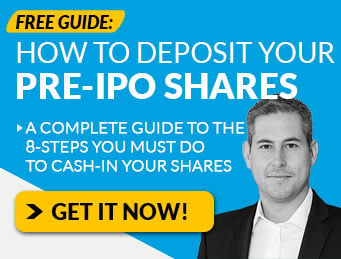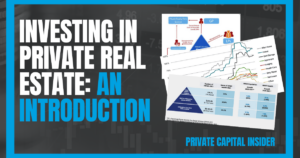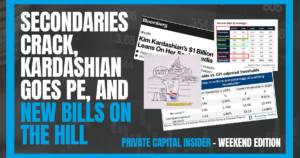After ~5 years of studying how people build (and then manage) generational wealth, I’ve boiled it down to a simple, three-step playbook that anyone can follow:
-
Step #1) Build Wealth: Statistically speaking, those with $5m+ in net worth do so through ownership of an operating business.
-
Step #2) Manage Wealth: Once a liquidity event has been achieved, they now need some sort of infrastructure to manage this newfound wealth and the related lifestyle expenses; for those with $100m+, they tend to form what’s called a Single Family Office or SFO).
-
Step #3) Institutionalize Wealth: Last but not least, in order to sustain this wealth over generations, there must be a process in place to handle all investment activity going forward (as well as succession plans).
My guess is that the vast majority of our readers don’t have $1b+ net worth, like the ultra-wealthy families I like to study…
But as Tony Robbins often says, “Success leaves clues.”
What can we learn from how these ultra-wealthy family offices invest their own money (vs how fund managers invest other people’s money)?
That’s the topic of today’s issue of Private Capital Insider.
Let’s dive in,
-Jake Hoffberg
P.S. I’ll be hosting the first “Interview with Management” webinar of 2023, on Wednesday, June 14th at 10 am PDT / 1 pm EDT.
On this call, I’ll be interviewing the CEO of FG Communities, Michael Anise.
We’ll be discussing the affordable housing crisis in America, why it’s getting worse, and how manufactured housing communities could be the answer.
As a reminder, securities sold under Reg CF, Reg A, and Reg D are often considered high risk, and speculative in nature. Please do not invest funds you cannot afford to lose, or otherwise need immediate access to the invested capital.
5 Wealth Building Lessons Learned From $1b+ Family Offices
In case you’re unfamiliar with what a Family Office is, it’s essentially a private company designed to manage the financial and personal affairs of wealthy families.
The company oversees a wide array of functions, including investment management, estate planning, tax planning, philanthropy coordination, and even lifestyle management.
Source: Anja Bauer, Wikimedia Commons
Essentially, Family Offices serve as a central hub, bringing together and streamlining the various components involved in wealth management and family governance.
Last month, two major financial firms released their annual report on Family Offices.
-
On May 8th, 2023, the Goldman Sachs Group, Inc (NYSE: GS) announced the launch of the 2023 Family Office Investment Insight Report, which surveyed 166 institutional family offices, each with a net worth of at least $500 million, with 72% of those surveyed having at least $1 billion.
-
On May 31, 2023, UBS announced the launch of the UBS Global Family Office Report 2023, which surveys 230 single Family Offices around the world, with an average total net worth of USD 2.2 billion.
While these reports tend to be a bit redundant every year – for example, increasing allocation to alternatives, succession planning, and risk management…
We’re also starting to see some changes in the way these ultra-wealthy families are investing – most notably, a significant increase in allocation to short-term fixed income as cash and treasuries are yielding a healthy risk-free rate of ~5%.
Source: UBS
Here are some of the biggest lessons I’ve learned from studying these resources on how Family Offices are thinking about investing in today’s markets.
Lesson #1) Maintain Cash Reserves
One of the things that come up frequently in these Family Office reports is the larger allocation to cash in the portfolio; Depending on the report you read, ~9-12%
According to Goldman Sachs:
Compared to other investors, we see family offices often having a relatively higher allocation to cash and other low-risk assets to balance their allocation to high-risk assets such as alternatives.
This is consistent with how we see many ultra-high-net-worth investors repositioning their portfolios in the current market environment and allocating to fixed income, with that capital serving as “sleep-well” money.
According to a chief investment officer for a US-based family office, “Right now, we probably have about a third of our capital in cash. If I look through to the managers we invest with (who are also heavily in cash), we are probably 50% in cash.”
Why do they do this?
Lesson #2) Invest Opportunistically
The simplest “reason why” investors hold cash on hand, is to be ready when favorable opportunities appear and require a quick decision.
According to Goldman Sachs:
Without the mark-to-market pressures from outside capital or stated benchmarks or mandates that other institutions may have, family offices can transact opportunistically.
In fact, as managers and private companies compete for a smaller available pool of capital in a difficult fundraising environment, family offices’ negotiating power is at a high point, allowing them to dictate investor-friendly terms.
Examples include more-favorable fee structures or co-investment rights for funds, and governance rights or structures that offer attractive features including discounts to IPOs and coupons in direct equity financings.
In my opinion, this is one of the most important lessons to learn about investing – and why individual investors like us have a distinct advantage over institutional investors.
Because we are managing our own money – and that money isn’t in the billions – we have far more flexibility in terms of what investment opportunities make sense.
For example, if you are an institutional investor, you have to get money out and put it to work, or you have to send it back to the investors (called Limited Partners or LPs).
In addition, if you’re a fund that has a minimum check size of $50m, you can’t participate in small deals that may have huge upside potential.
And even though individual investors likely don’t have the skills or ability to negotiate deals directly with companies the way Family Offices do…
If you’ve got cash sitting on the sidelines ready to deploy when the opportunity arises, you’ll be able to move quickly and secure your position.
Thanks to the vastly lower minimums found in Regulation Crowdfunding and Regulation A+ offerings, retail investors can participate in high risk investments without risking too much capital on any single opportunity.
But if you’re already sold on the idea of diversifying into alternatives, now the question becomes: “What opportunities am I looking for in the first place?”
Lesson #3) Focus On “Secular Growth Themes”
One of the major lessons I’ve learned from sophisticated investors is to take a top down approach to investing.

This means instead of looking at an investment opportunity and saying “hey, is this a good company to invest in?”…
You start by having a view of the macroeconomic factors playing out in the broader market…
Then, you go one click down and look at the broader sectors to see which ones are trending up or down.
After that, you can narrow it down to industry groups, industries, and sub-industries to get as granular as you want.
Today, this is known as the Global Industry Classification Standard (GICS) Framework and comprises 11 sectors, 24 industry groups, 69 industries, and 158 sub-industries.

Over time, what tends to happen is some cross section of sectors, industry groups, industries, sub-industries, and individual companies wind up getting lumped into a long term investment thesis.
The purpose of this is to identify Secular Growth Trends – a long-lasting and essential shift in an industry or sector leading to substantial growth. For example, the shift to electric vehicles represents a profound change in the automotive industry.
Because Family Offices tend to operate as what’s known as “Permanent Capital,” they aren’t looking for quick flips. Instead, they are looking for long-term holds that can continue to provide cash flow and growth.
According to Goldman Sachs:
Across both the public and private markets, and consistent with their multi-generational investment horizons, family offices remain focused on secular growth themes.
We have seen family office interest in companies that have the potential to endure business cycles and drive value over the long term, albeit with greater scrutiny around valuations and growth-oriented investments.
A noteworthy number of Family Offices are overweight in the broader technology and healthcare sectors – particularly in tech-enabled procedures, digital healthcare, and life sciences – reflecting the belief in the long-term growth potential of these industries.
Source: Goldman Sachs
However, with the current market turmoil and significant valuation resets in the technology sector, this could represent a key opportunity to buy in at attractive entry points.
In addition, we’re also seeing a potential generational opportunity in life sciences as the markets shift.
According to Goldman Sachs:
In addition to certain sub-sectors, such as pharmaceuticals, that are historically considered defensive, the landscape is rapidly evolving, particularly in life sciences.
In parallel, a lack of venture capital funding and the retreat of “tourist capital” — non-traditional investors — prompted by the drawdown in biotech valuations in the public markets, may have also created additional opportunities for family office investors in this space.
One of the most important lessons I’ve learned in my short career as an investor is this: the market is cyclical in nature.
This means there’s always a bull market somewhere.

Generally speaking, it’s easier to make money when sectors are “hot”…
But mathematically speaking, the best time to buy is when they are out of favor, prices are depressed, and you can buy opportunistically.
However, just because you’re running a sector rotation and rebalance strategy doesn’t guarantee you’ll improve your returns.
This is why…
Lesson #4) Improve Returns by Reducing Fees and Investing Directly
Some of the silent killers inside your portfolio are fees, commissions, and carried interest (i.e., the “2 and 20” model used by most fund managers).
But what if you could skip the middleman and get rid of those fees?
While there is still no guarantee of positive returns, mathematically speaking, it’s probably the easiest way to improve returns WITHOUT increasing risk.
That’s why I’m not surprised by the rising interest in direct investing within the private markets.
According to Goldman Sachs:
This may be driven by the possibility of more strategic involvement, access to management, increased control over investment selection, or the perception of lower or no direct fees.
Given the resources needed to source and evaluate these opportunities, we find that family offices with larger asset bases are more easily able to justify the incremental cost and manage the potential risks, such as concentration, that are associated with direct investing.
Overall, Family Offices tend to primarily invest through managers, with the exception of real estate. Most likely, this is because real estate is an asset class the Family Office is most comfortable with, or otherwise has experience owning and developing it.
Source: UBS
Not surprisingly, the majority of real estate investments are allocated to the “Core/Core Plus” risk category at 59% – high quality, low-risk buildings, generating steady cash flows.
They allocate the remaining 41% to more opportunistic investments, developing buildings or repositioning them for capital gains, while also keeping an eye out for distressed opportunities.
Source: UBS
However, other sources suggest that Family Offices may be reducing direct investment as – shocker – it’s harder than it looks to replicate the infrastructure an institutional fund manager has in place.
Source: Institutional Investor
Over the past six months, family offices have slowed their direct investing or halted it entirely with the intention of turning that responsibility over to asset managers.
A single-family office needs at least $250 million of wealth to operate in an ideal way, including to adequately source, evaluate, and make direct investments on its own.
However, according to UBS, the decline in direct private equity allocations should be seen within the context of Family Offices’ plans to resume raising allocations over five years, as 41% still intend to do so.
Further, the decline in direct private equity is partially offset by a rise in allocations to private equity funds and funds of funds, from 8% in 2021, to 10% in 2023.
Lesson #5) Cash Flow is King: Own Operating Businesses
79% of Family Offices have significant operating business interests, with many planning to hold them indefinitely.
Why?
They value stable cash flows, lifestyle preservation, and legacy preservation offered by these businesses.
According to Goldman Sachs:
In our inaugural survey, we found that 19% of family offices considered the development or acquisition of operating businesses a top priority. Based on our conversations, this appetite remains.
Consistent with what we hear on the ground, 33% of all family offices reported that other family-owned businesses are central to their investing philosophy.
Also, having an asset whose express purpose is to cover your lifestyle expenses, means investments can be held for longer terms (and ideally continue to benefit from compounding interest).
Again, for Family Offices, the most popular sector is real estate (38%), although in reality the border between real estate operating and investment businesses is often blurred.
The second most common sector is industrials (21%), closely followed by financials (20%) and consumer discretionary (19%).
When evaluating an acquisition, valuations are the most important factor for 49% of Family Offices that make direct private investments, followed by cash-flow profile (41%), and secular growth trends (33%).
Source: Goldman Sachs
I’ve said this before and I’ll say it again…
For those seeking to accumulate any significant wealth, statistically speaking, it is achieved through ownership of operating businesses.
I can’t stress enough how important it is to have a primary asset whose job is to cover lifestyle expenses.
In the beginning, this primary asset is likely our labor, which we then trade for wages.
But as we’ve already learned, money isn’t wealth. To build wealth, we have to convert money into assets that produce money while we sleep.
Good news: you don’t have to be a Startup Entrepreneur – or an early employee of a startup – to acquire equity in an operating company.
Instead, you can act as an Acquisition Entrepreneur and simply buy an already-cash-flowing operating company.
This has become one of the “hot” trends over the past five years, as more MBA programs teach what’s known as the “Search Fund” model.
The search fund model was developed in 1983, when Irving Grousbeck, then a professor at Harvard Business School (“HBS”) and now the Director of the Center of Entrepreneurial Studies at Stanford GSB, assisted young entrepreneurs to acquire and operate small businesses.
One of the first recognized examples is Nova Capital, founded by Jim Southern in 1984.
After forming Nova with investments from former business associates and professors, Southern began to reach out to business owners looking to sell. He eventually came across Uniform Printing, the business forms division of a publicly traded printing company.
At $40+ million in revenue with over 750 employees, it was a sizeable business for a first-time CEO. However, with mentorship and guidance from his investors, Southern was able to grow Uniform Printing substantially over the next 10 years.
In 1994, Southern and his investors sold the business, generating an ROI of over 24x.
In addition, books like Walker Deibel’s “Buy Then Build” – and the growing SMB Twitter community – have introduced this concept to a broader audience.








